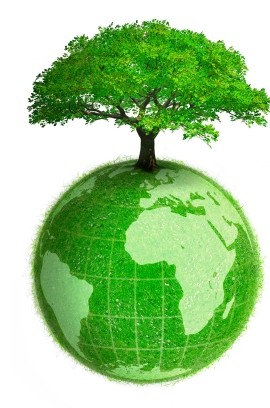afrol News, 8 April - More than 600 delegates at the 30th Annual Conference of the International Association for Impact Assessment (IAIA), hosted by the United Nations Environment Programme (UNEP), will look at the five sectors that have been identified as key green investment opportunities – agriculture, industry, tourism, cities and transportation – many of which are open in the developing countries.
Experts from 75 countries gathered in Geneva today for a United Nations-backed meeting to discuss the social and environmental impact of transitioning to a more environmentally-friendly economy.
“When they met in Bali [Indonesia] two months ago, the world’s environment ministers emphasized that the full impacts of green economy policies should be assessed, including environmental, social and economic aspects,” said Achim Steiner, UN Under Secretary-General and UNEP Executive Director.
“Professionals involved in impact assessments thus have an important role to play in delivering more intelligent and sustainable choices to their customers and clients including governments, business, local authorities and civil society: choices that can direct investments to fit local, national and regional needs while addressing the broad agenda of low carbon, resource efficient development, poverty eradication and higher levels of decent employment,” he added.
One of the key goals of the conference – hosted for the first time by a UN agency – is to present the tools and methods that will help countries to assess and identify which green investments to make.
Nick Taylor, President of the IAIA, said delegates at the six-day meeting would share their ideas and insights on how impact assessment can address a complex range of global issues.
“A growing field of expertise, impact assessment can evaluate the linkages between investments and the environment, health, job creation, economic diversification and poverty reduction. This forum comes at a time when there’s heightened interest in the potential of impact assessments, so it’s vital experts exchange information and contribute to a growing body of knowledge,” Mr Taylor said.
UNEP’s flagship Green Economy Report, to be released later in the year, will present in-depth assessments of 10 sectors based on economic analysis and modelling. Three of the report's chapter authors will be present to share some of the report's preliminary analysis.
IAIA is a global network for best practice in the use of impact assessment for informed decision-making regarding policies, programmes, plans and projects. It brings together researchers, practitioners, and users of various types of impact assessment from around the world.
Recently, a report by released UNEP, warned that Africa was lagging behind the rest of the world in developing renewable energy projects with initiatives aimed at producing clean and ‘green’ energy remaining largely under-exploited.
The report noted that the entire continent has just over 120 carbon market projects up and running or in the pipeline in areas ranging from wind power to forestry schemes, and harvesting methane gas from landfills to fuel electricity generation makes up 20 percent of all such initiatives.
Larger economies in Africa such as Egypt and South Africa are home to the lion’s share of the schemes, with 32 and 13 projects respectively, while Zambia, Madagascar, Cameroon and Mali only have one or two projects each and several countries have none, pointed out the report.
The study also reported patchy growth in the Clean Development Mechanism (CDM), an arrangement under the Kyoto Protocol allowing developed countries to reduce emissions and meet global warming commitments by investing in carbon reduction projects in developing countries.
However, the report – prepared for the opening of the Second African Carbon Forum – highlighted Kenya and Uganda as exceptions with the number of carbon market projects underway in these countries jumping from two in 2007 to 15 and 12 respectively.
“The growth of the carbon markets in Africa are both cause for optimism, and cause for concern,” UNEP Executive Director Achim Steiner told around 1,000 participants attending the three-day gathering, held at the agency’s offices in Nairobi, Kenya.
“To realize only a few percentage points more of the massive potential for wind, solar, biomass and waste into energy schemes, action across a range of challenges needs to be stepped up,” said Mr Steiner then.
Mr Steiner noted that the introduction a policy designed to encourage the adoption of renewable energy sources in Kenya triggered interest from a consortium to establish Africa’s largest wind farm in the country.
“The groundwork has been laid for Africa to boost its participation in the carbon market, which is growing as an important commodity market worldwide,” said John Kilani of the UN Framework Convention on Climate Change (UNFCCC). “You are bound to do business [under the Kyoto Protocol’s CDM] when you bring all of the key market players together: the investors, buyers and sellers,” said Mr Kilani.
The Africa-wide UNEP assessment estimated that close to 4,900 CDM projects are up and running or in the pipeline worldwide, a large number of which are in the big developing economies such as Brazil, China and India.
By staff writer
© afrol News

 Can Africa feed herself...?
Can Africa feed herself...?
